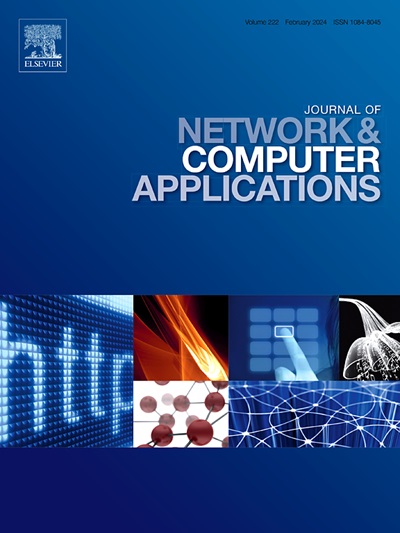FlowTracker: A refined and versatile data plane measurement approach
IF 8
2区 计算机科学
Q1 COMPUTER SCIENCE, HARDWARE & ARCHITECTURE
引用次数: 0
Abstract
To acquire per-hop flow level information, existing works have made significant contributions to offloading network measurement onto data center switches. Despite this, they still pose challenges due to increasingly complex measurement tasks and massive network traffic. In this paper, we introduce FlowTracker, a flow measurement primitive in the data plane. Our key innovation is a hash-based data structure with constant size and collision resolution, which allows fine-grained and real-time monitoring of various flow statistics. We have fully implemented a FlowTracker prototype on a testbed and used real-world packet traces to evaluate its performance. The results demonstrate FlowTracker’s efficiency under different measurement tasks. For example, with 0.5 MB of memory, FlowTracker can accurately estimate 98% heavy hitter out of 25K flows, with an average relative error of 1.28%. It also achieves 92.27% higher accuracy in packet delay estimation and 121.83% higher flow set coverage compared to competitors with only 64 KB of memory. Furthermore, FlowTracker imposes minimal overhead, requiring just 0.04% extra bandwidth for large-scale network processing. With these capabilities, FlowTracker can provide network operators with deep insights and efficient flow control of their networks.
FlowTracker:一种精炼和通用的数据平面测量方法
为了获取每跳流量级别信息,现有的工作对将网络测量转移到数据中心交换机上做出了重大贡献。尽管如此,由于日益复杂的测量任务和庞大的网络流量,它们仍然带来了挑战。本文介绍了数据平面上的流量测量原语FlowTracker。我们的关键创新是基于哈希的数据结构,具有恒定的大小和冲突分辨率,可以对各种流量统计进行细粒度和实时监控。我们已经在测试平台上完全实现了FlowTracker原型,并使用真实的数据包跟踪来评估其性能。结果证明了FlowTracker在不同测量任务下的效率。例如,使用~ 0.5 MB的内存,FlowTracker可以准确地估计出25K流中98%的重磅攻击,平均相对误差为1.28%。与只有64 KB内存的竞争对手相比,它在数据包延迟估计方面的准确率提高了92.27%,流集覆盖率提高了121.83%。此外,FlowTracker施加最小的开销,只需要~ 0.04%的额外带宽用于大规模网络处理。有了这些功能,FlowTracker可以为网络运营商提供深入的见解和有效的网络流量控制。
本文章由计算机程序翻译,如有差异,请以英文原文为准。
求助全文
约1分钟内获得全文
求助全文
来源期刊

Journal of Network and Computer Applications
工程技术-计算机:跨学科应用
CiteScore
21.50
自引率
3.40%
发文量
142
审稿时长
37 days
期刊介绍:
The Journal of Network and Computer Applications welcomes research contributions, surveys, and notes in all areas relating to computer networks and applications thereof. Sample topics include new design techniques, interesting or novel applications, components or standards; computer networks with tools such as WWW; emerging standards for internet protocols; Wireless networks; Mobile Computing; emerging computing models such as cloud computing, grid computing; applications of networked systems for remote collaboration and telemedicine, etc. The journal is abstracted and indexed in Scopus, Engineering Index, Web of Science, Science Citation Index Expanded and INSPEC.
 求助内容:
求助内容: 应助结果提醒方式:
应助结果提醒方式:


